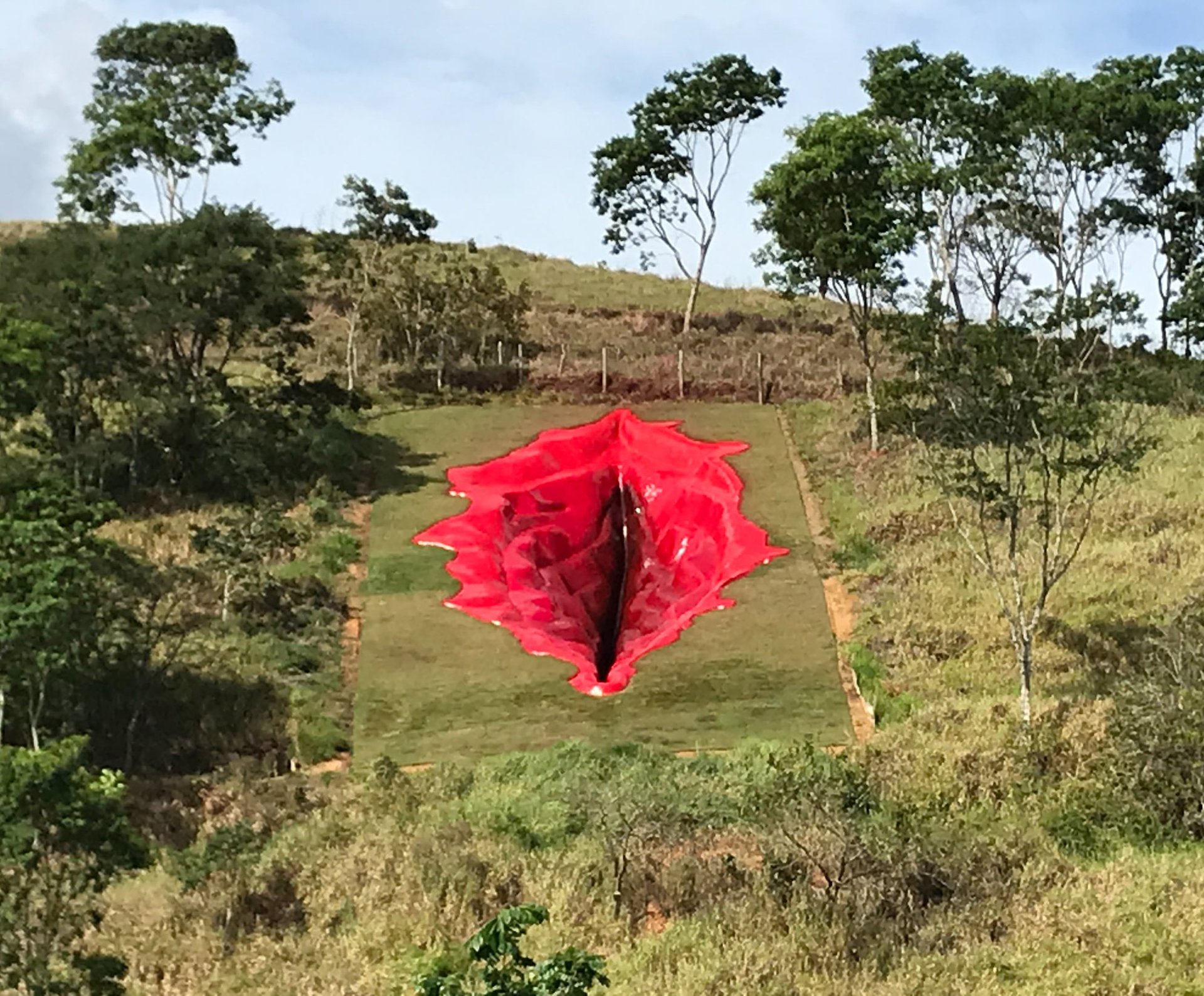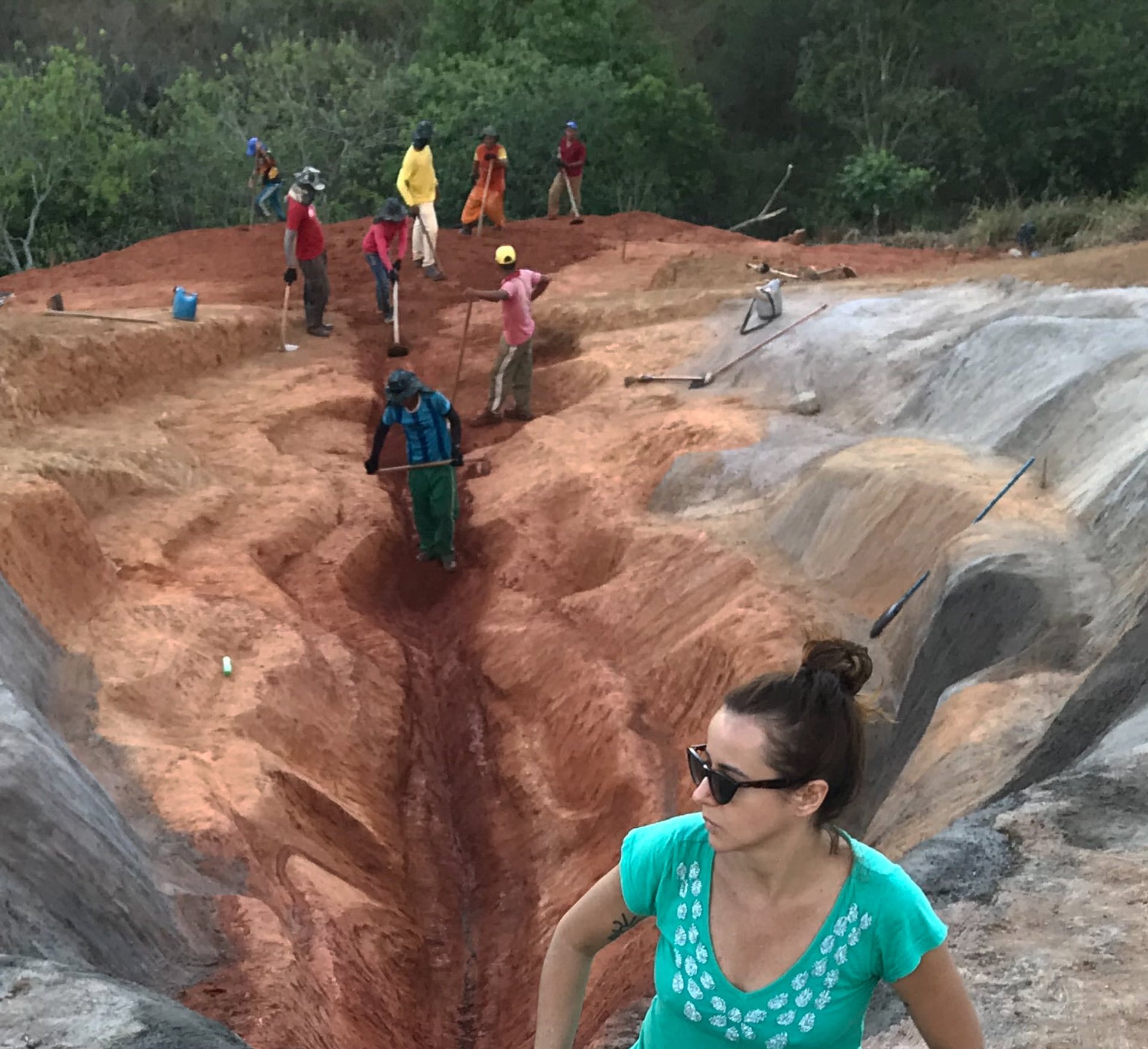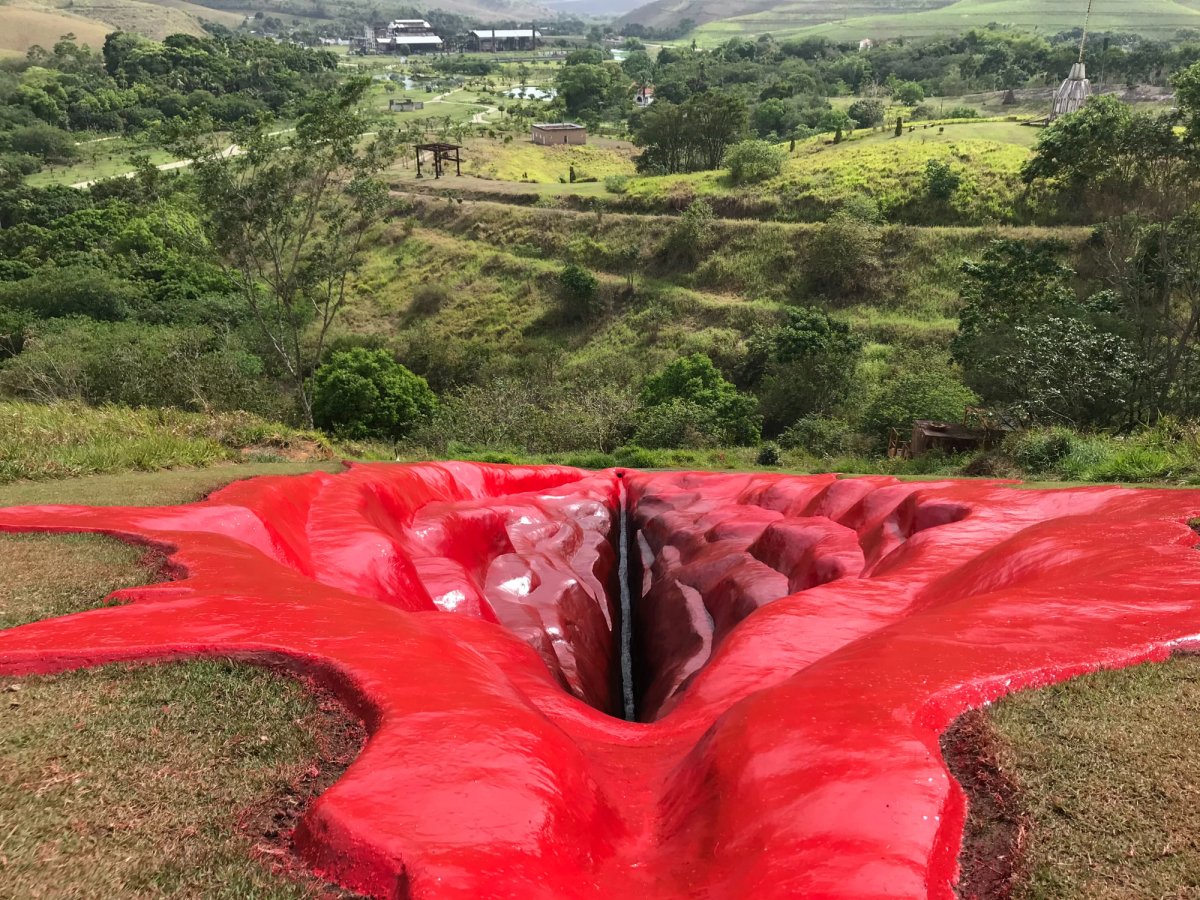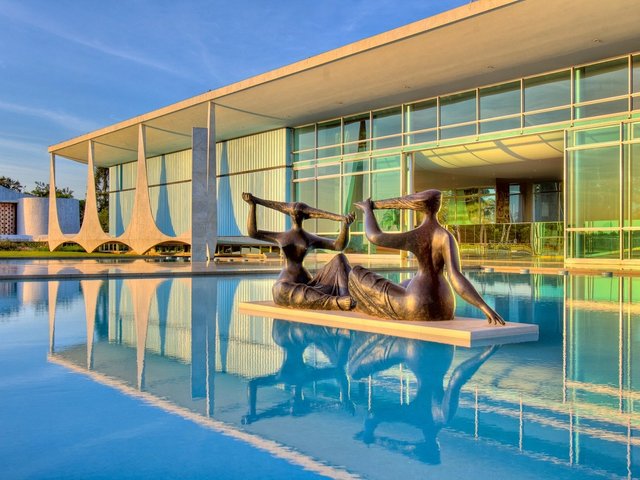We are less than a week into the new year, but the prize for 2021's most controversial public sculpture might have already been claimed by a newly installed 33m-high concrete crimson vulva in Brazil, which has sparked fierce online debate.
Recessed onto a hillside within a sculpture park in the northeastern state of Pernambuco, Diva, by the Brazilian artist Juliana Notari, intends to question the "problematisation of gender" and change perspectives on human relationships that create an "unequal and catastrophic world", Notari states in a Facebook post.
She adds that these issues are "increasingly urgent", referring to the country's political climate under the leadership of President Jair Bolsonaro. Last week, following Argentina's decision to legalise abortion, Bolsonaro expressed sympathies via Twitter for the lives of Argentine children "now subject to being cut in their mothers' wombs with state consent" and vowed to never approve abortion in Brazil.
Described by his critics as an enemy of the arts, Bolsonaro's presidency has also seen the cultural censorship of a number of minority groups including Afro-Brazilians and the LGBTQ+ community.

Juliana Notari's Diva (2020) Courtesy of Juliana Notari
Unsurprisingly then, Notari has found her post deluged with tens of thousands of comments from Facebook users who have denounced the sculpture as "leftist propaganda", "obscene" and "reprehensible". The prolific right-wing Brazilian polemicist Olavo Carvalho tweeted that the sculpture should be "dealt with" by a 33m-long penis.
Many also took issue with the notion that an apparently feminist work should have used the labour of 20 men, who were shown physically installing the sculpture in a photo uploaded by Notari. "These men will never find the clitoris," quipped another user.

Workers installing Diva (2020) Courtesy of Juliana Notari
However, many also expressed support for Notari's work, acknowledging its importance in addressing pressing issues in Brazilian society. "Juliana Notari is once again cruel, raw, clear, painful and penetrating. She's not here to play," writes the cultural consultant Afonso Oliveira.
Others also pointed out that the entirely Black workforce is seen in pictures installing the work on the site of a former sugar mill. Notari did not make specific reference to the site's history of slavery in her post.





